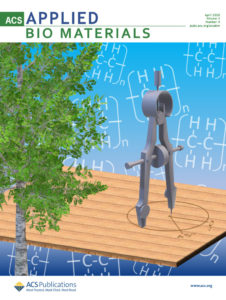Râmile Luíse Pereira Oliveira Moreira, José Alexandre Simão, Rubia Figueredo Gouveia and Mathias Strauss
Brazilian Nanotechnology National Laboratory (LNNano), Brazilian Center for Research in Energy and Materials (CNPEM), Zip Code 13083-970, Campinas, São Paulo, Brazil.

no spine minimum. full size. Editor: Jon JEM: Esther
RTP: Bryan Nolte
TOC image
Abstract
Materials found in nature have their properties tuned by the chemical composition and hierarchical organization of their structures. Wood is one example of natural material which has properties tuned by its multi-scale hierarchical organization. The cellulose microfibril angle is critical for physical and mechanical properties of wood. On the other hand, polymeric composites containing fibrillar additives, like cellulose fibers, are widespread and have exceptional mechanical properties, which enable them to be used as structural materials. However, obtaining polymer composites with well-aligned cellulose fibers is a challenging task. This work aims to explore the hierarchical structure and alignment of cellulose fibers from wood in polymeric composites with anisotropic mechanical properties, inspired by what trees naturally do. In this sense, cellulosic material from wood was analyzed on a multi-scale; impregnation with polyethylene and densification were performed to form composites; and their mechanical properties were correlated with fiber angles in composite specimens. Moreover, polymer addition to the cellulosic backbone has tremendously increased the material resistance to wetting and chemical oxidation.
ACS Appl. Bio Mater. 2020, 3, 4, 2193-2200
Direct Link: https://doi.org/10.1021/acsabm.0c00038
Front cover art avaiable at: https://pubs.acs.org/pb-assets/images/_journalCovers/aabmcb/aabmcb_v003i004.jpg?0.38153776929389327


